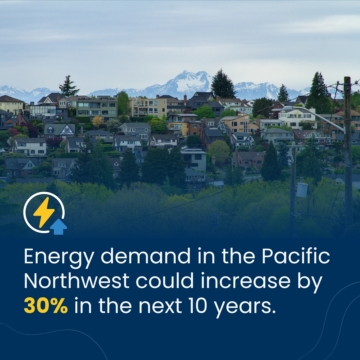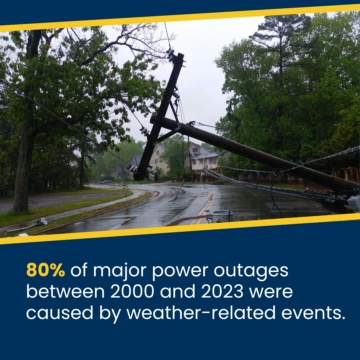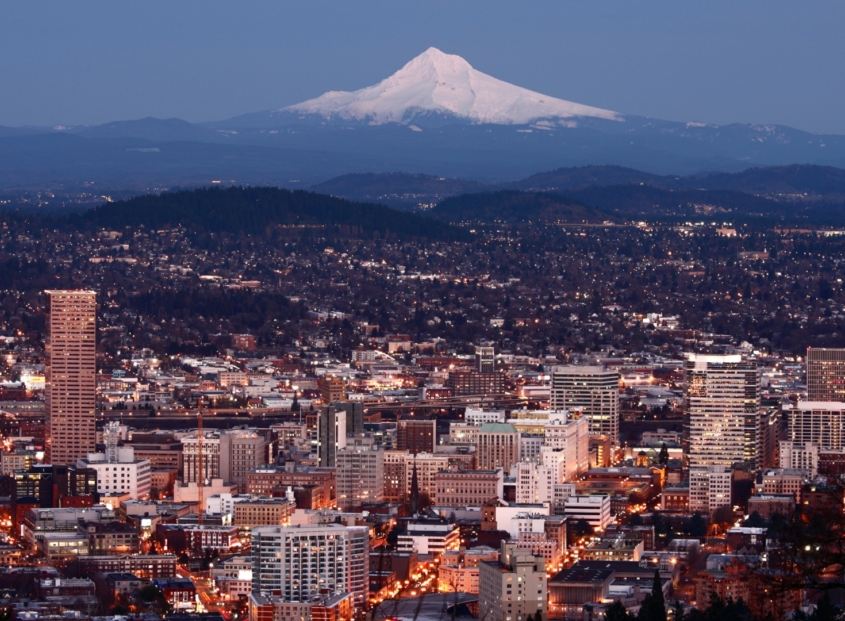Forecasting the Future of Electricity in the Pacific Northwest
Electricians will play a significant role in the future of innovative energy infrastructure. With more power demands in our region, it’s crucial to understand the opportunities and challenges shaping the future of electricity.
Electrical Power Grids: Then vs Now
Power grids functioned as single-path systems in the past. Electrical power was engineered in a plant, and the energy was sent directly to buildings to power everything from lighting, HVAC equipment, and appliances. The power grids of today—and the future—have a more decentralized framework and draw on more renewable resources.
Understanding Energy Demand in the Pacific Northwest
The demand for energy in the Pacific Northwest is surging and shows no signs of slowing down. According to the Pacific Northwest Utilities Conference Committee (PNUCC), demand could increase by 30% over the next decade.
What’s Driving Demand?
There are a few factors that contribute to the accelerated energy need:
- Urbanization and population growth. As cities expand and populations rise, the overall demand for electricity increases to support infrastructure, homes, and businesses.
- Investing in U.S.-based high-tech manufacturing. The CHIPs Act promises to bring billions in semiconductor investments to the Pacific Northwest. With the added infrastructure comes expanded electricity demands.
- The growth of data centers. As more and more data centers pop up in the PNW, more energy is needed to help meet the needs of these tech-housing buildings.
What Does the Modern Energy Landscape Look Like?
We are at the dawn of an exciting time in electricity development and implementation. Smart homes are becoming a reality, electric vehicles are on the rise, and advancements in technology are transforming how we power our lives. These technologies have influenced electricity consumption patterns and, as a result, require reliable energy sources.
Climate Change and Energy
Climate change plays a significant role in evolving energy systems. The drive to reduce fossil fuel use has propelled renewable energy sources into the forefront of electrical infrastructure changes. Newer, green technologies introduce more grid variability. Renewable sources, like wind, solar, and hydrogen, require efficient energy storage capabilities to provide real-time energy.
Climate change increases the strain on electrical grids due to extreme weather events. Storms, heatwaves, wildfires, and ice can severely stress energy systems, leading to significant power outages during peak demand periods. Case in point, weather-related events caused 80% of significant power outages between 2000 and 2023.
Energy Demand Solutions: Capturing Power
How is the Pacific Northwest preparing for pressing energy demands and infrastructure change? The answer involves a multifaceted approach that utilizes natural resources and modern innovation.
Microgrid Technology:
Microgrids are self-contained energy sources that can work independently or as part of a more extensive grid system. They can seamlessly integrate into sustainable energy sources, balance energy usage and demand to optimize energy use, and provide power when main grids shut down.
In the Pacific Northwest, two large-scale community microgrids are in the works to help meet demand.
Clean Hydrogen:
Green hydrogen—splitting water molecules by electrolysis powered by renewable energy—is coming to the PNW from government funding. The Pacific Northwest Hydrogen Hub project will receive up to $1 billion in federal investment to boost energy production and increase jobs.
The above solutions provide a roadmap for handling growing energy demands. However, knowledgeable, experienced contractors and electricians will play a huge role in the Pacific Northwest’s electrical future.
The NECA/IBEW Partnership: Powering the Pacific Northwest’s Future
For over a century, NECA and IBEW Local 48 members have been instrumental in building and powering Oregon and SW Washington. The NECA/IBEW partnership has not only helped shape our region’s electrical infrastructure but also leads the way into the future of sustainable energy.
Discover the difference that membership makes by joining a community dedicated to excellence, innovation, and growth. Together, we are ensuring a brighter, more efficient future for the Pacific Northwest, with a legacy of craftsmanship and leadership that continues to drive progress forward.



